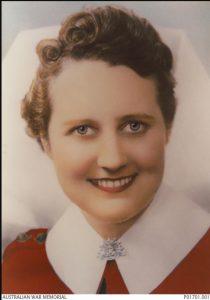The following detailed diary is by QX6306 Captain Fred Stahl, Staff Captain (Administration) to Lt. Col Kappe, 8th Division Signals – appointed CO Australian contingent of ‘F’ Force.
& TANBAYA HOSPITAL CAMP, BURMA

Capt Stahl’s diary relates to the story of Lt. Col Kappe
Below: This page includes details of Japanese information to Singapore based POWs encouraging 7,000 POWs to leave with ‘F’ Force Thailand – it would be in order to ‘include 30% light duty sick men’
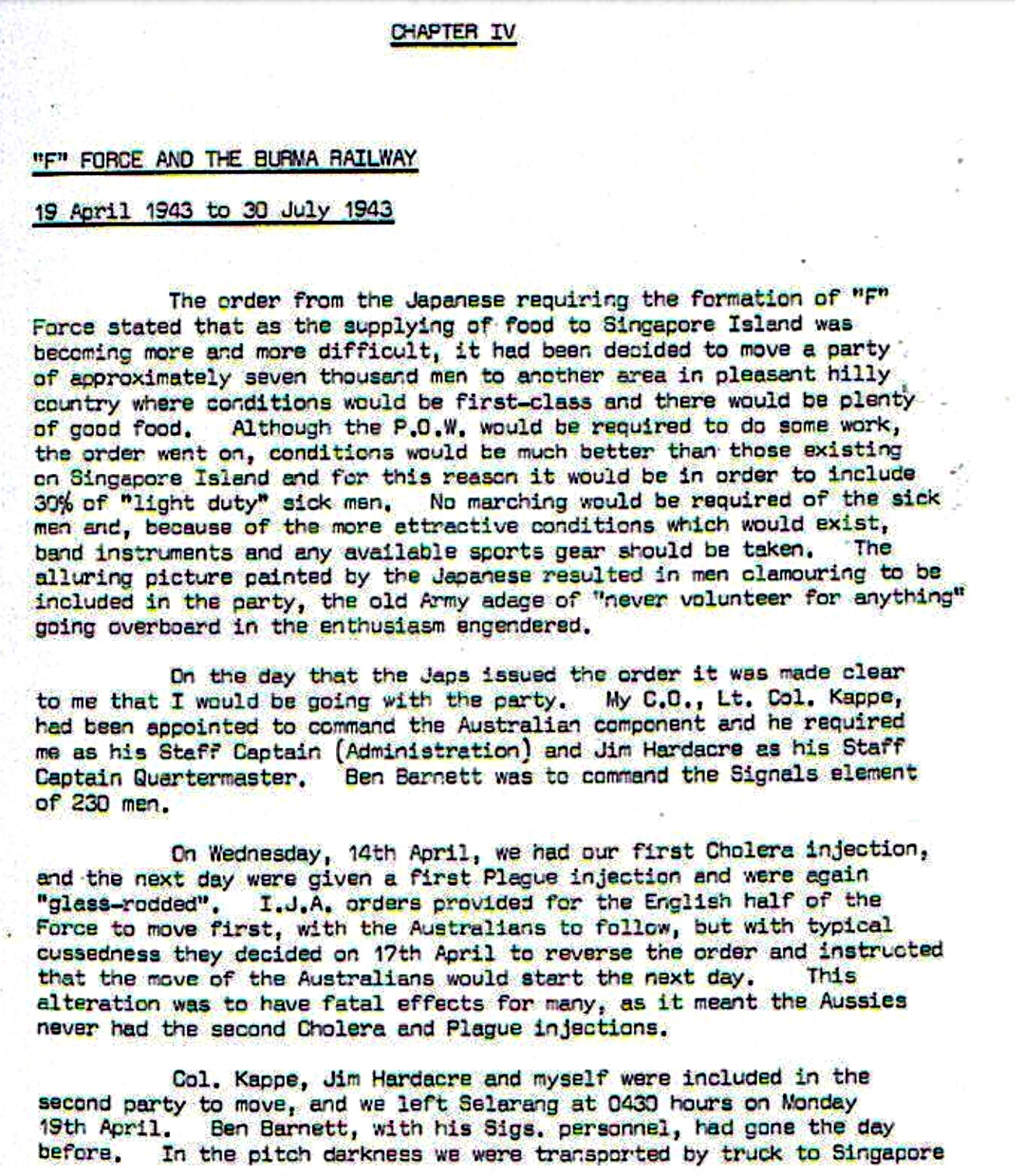

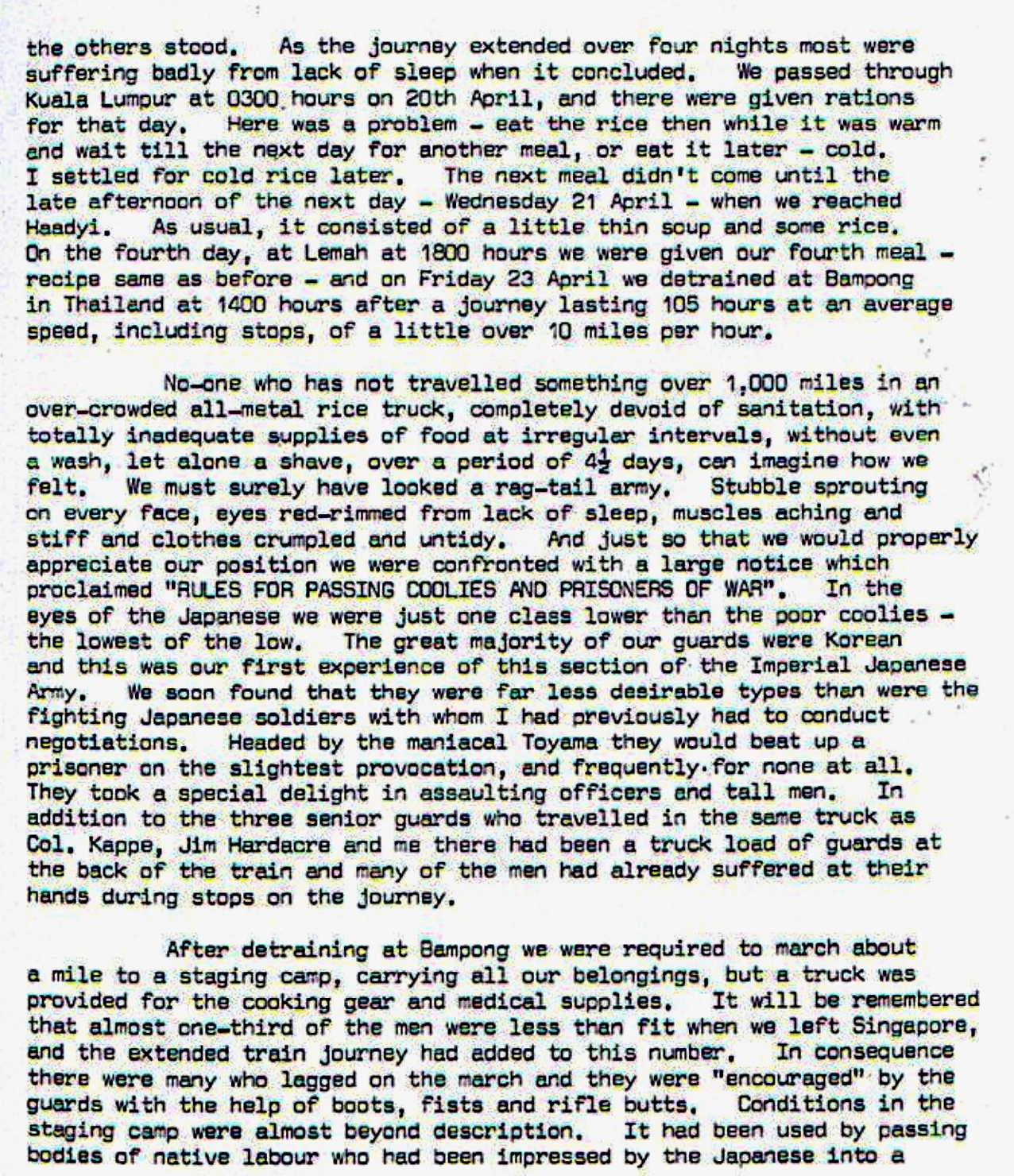

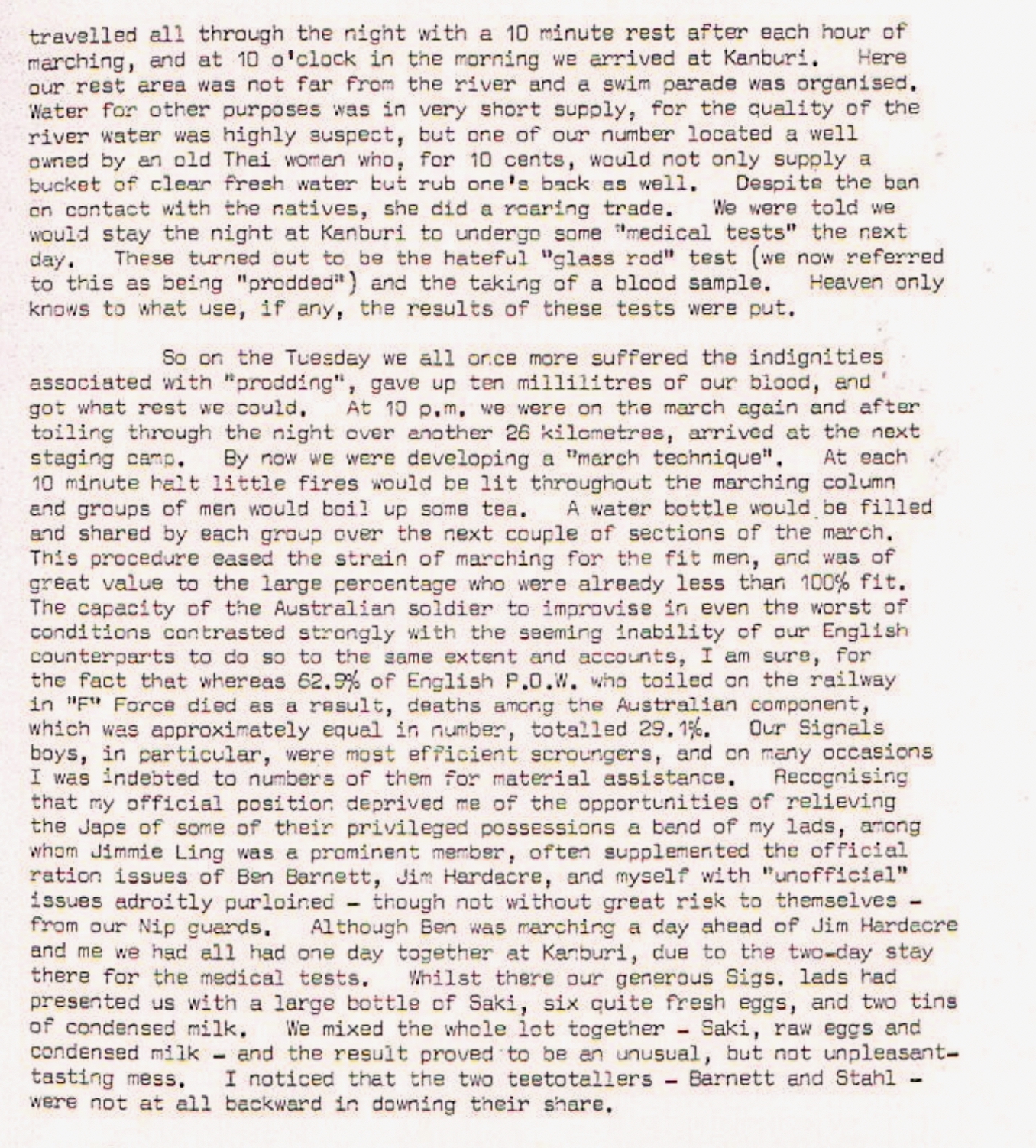
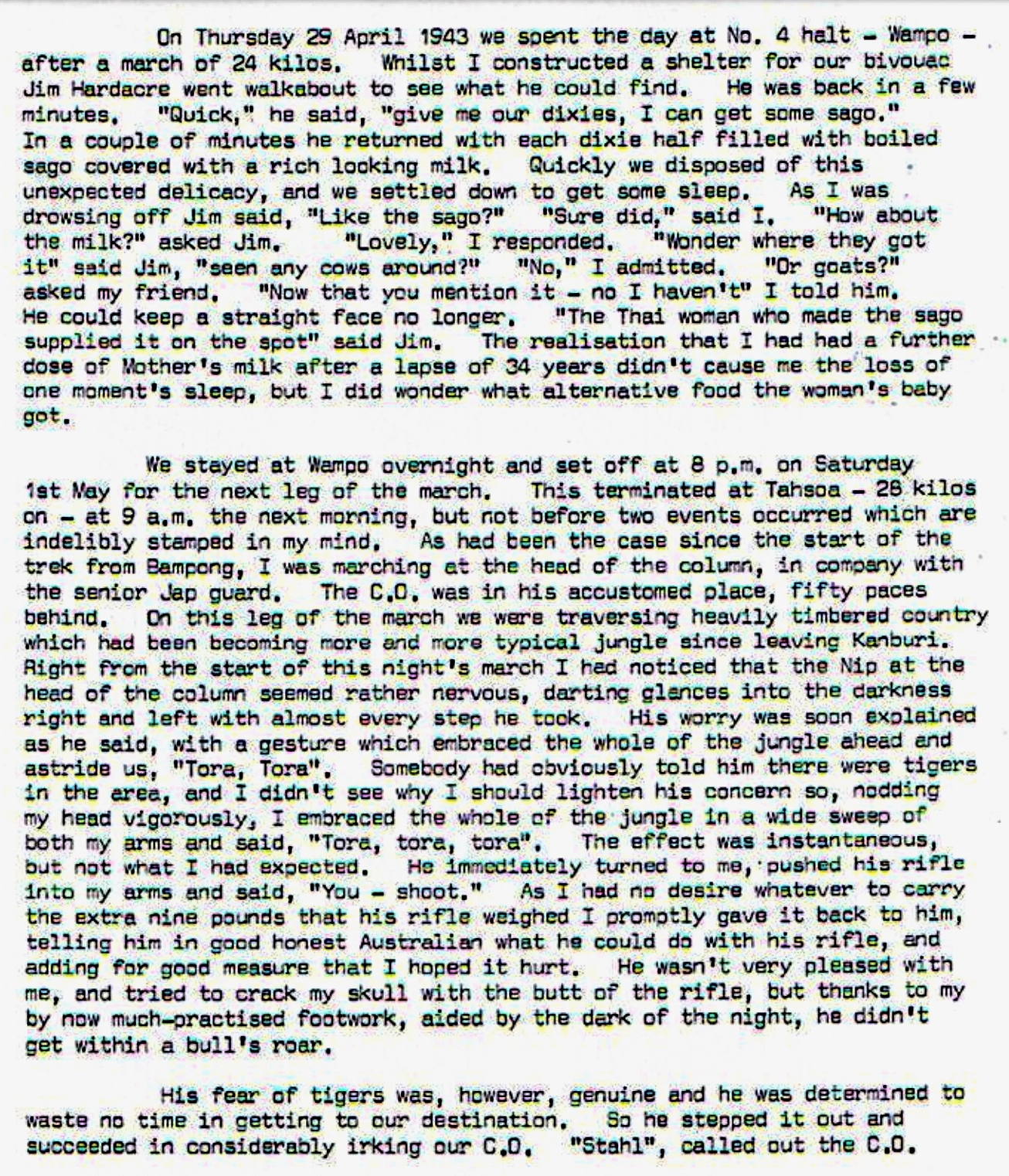

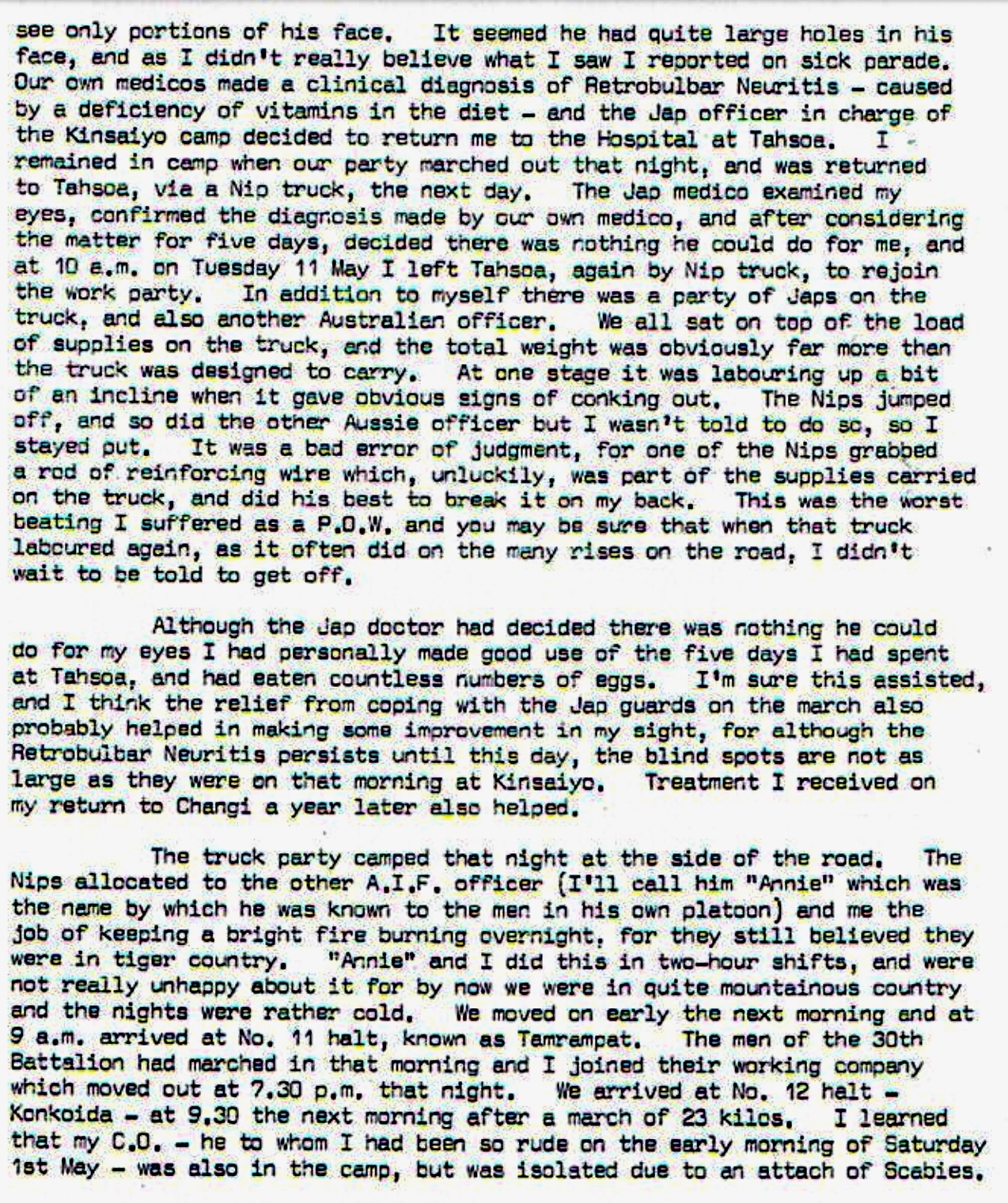
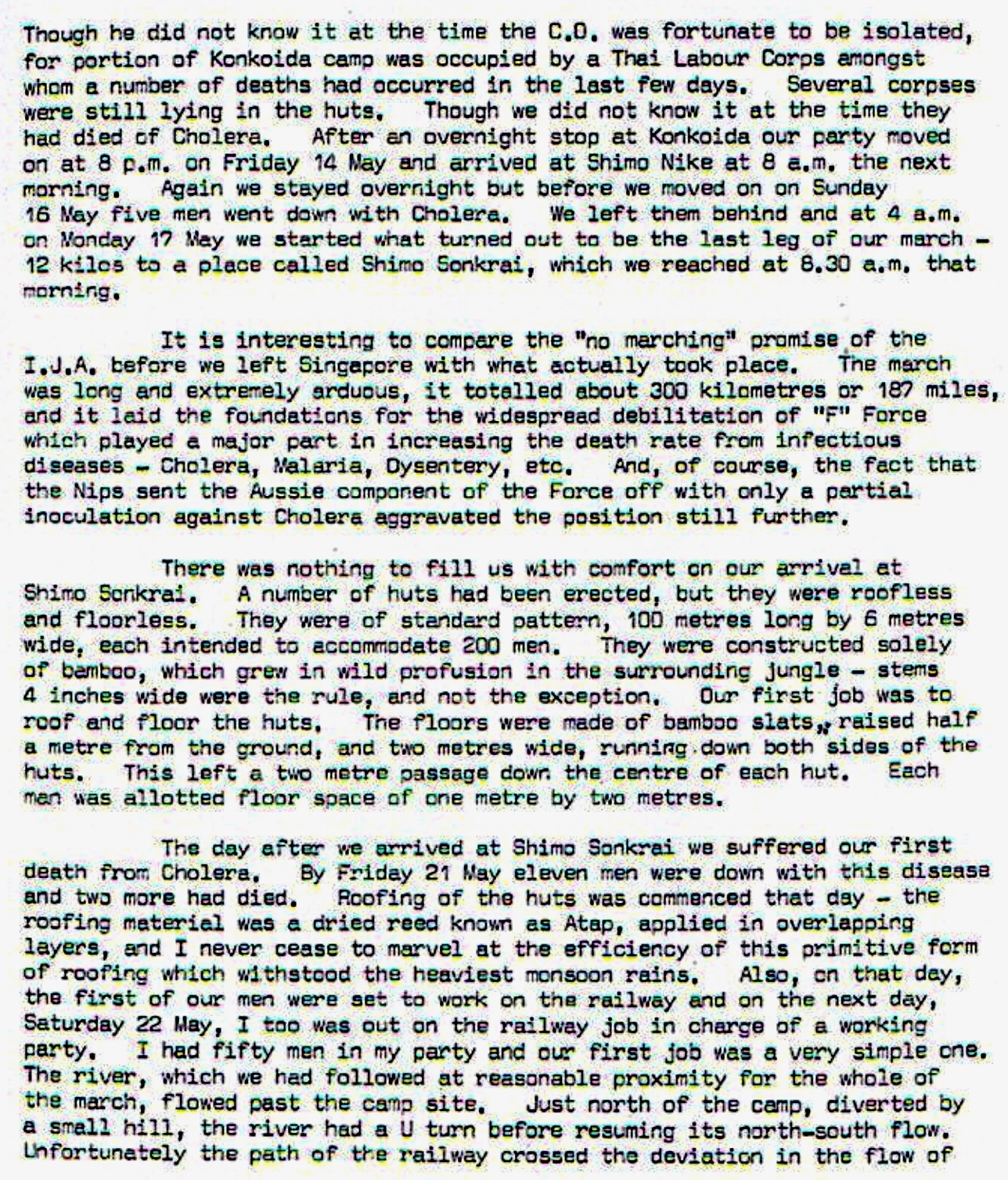
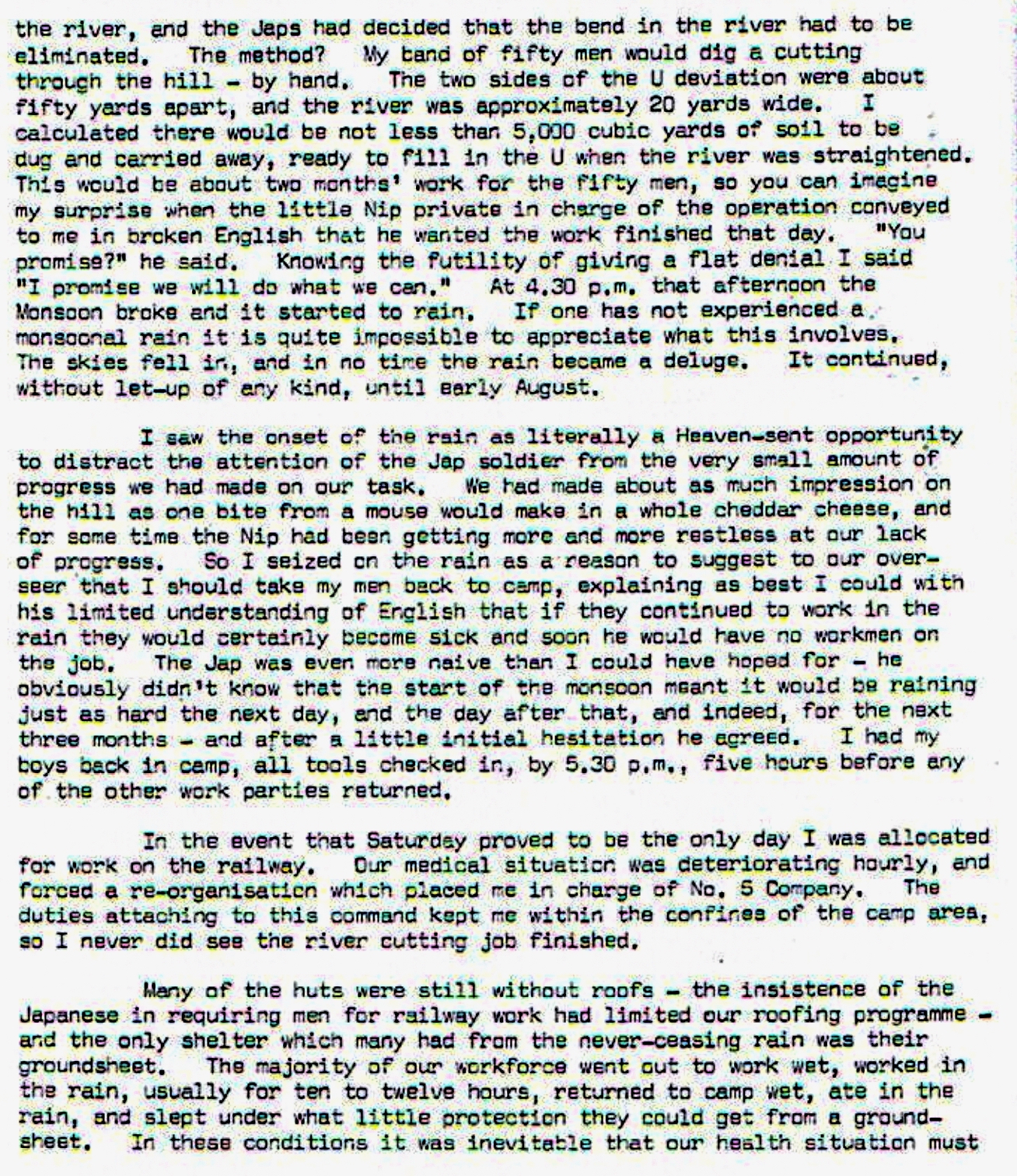
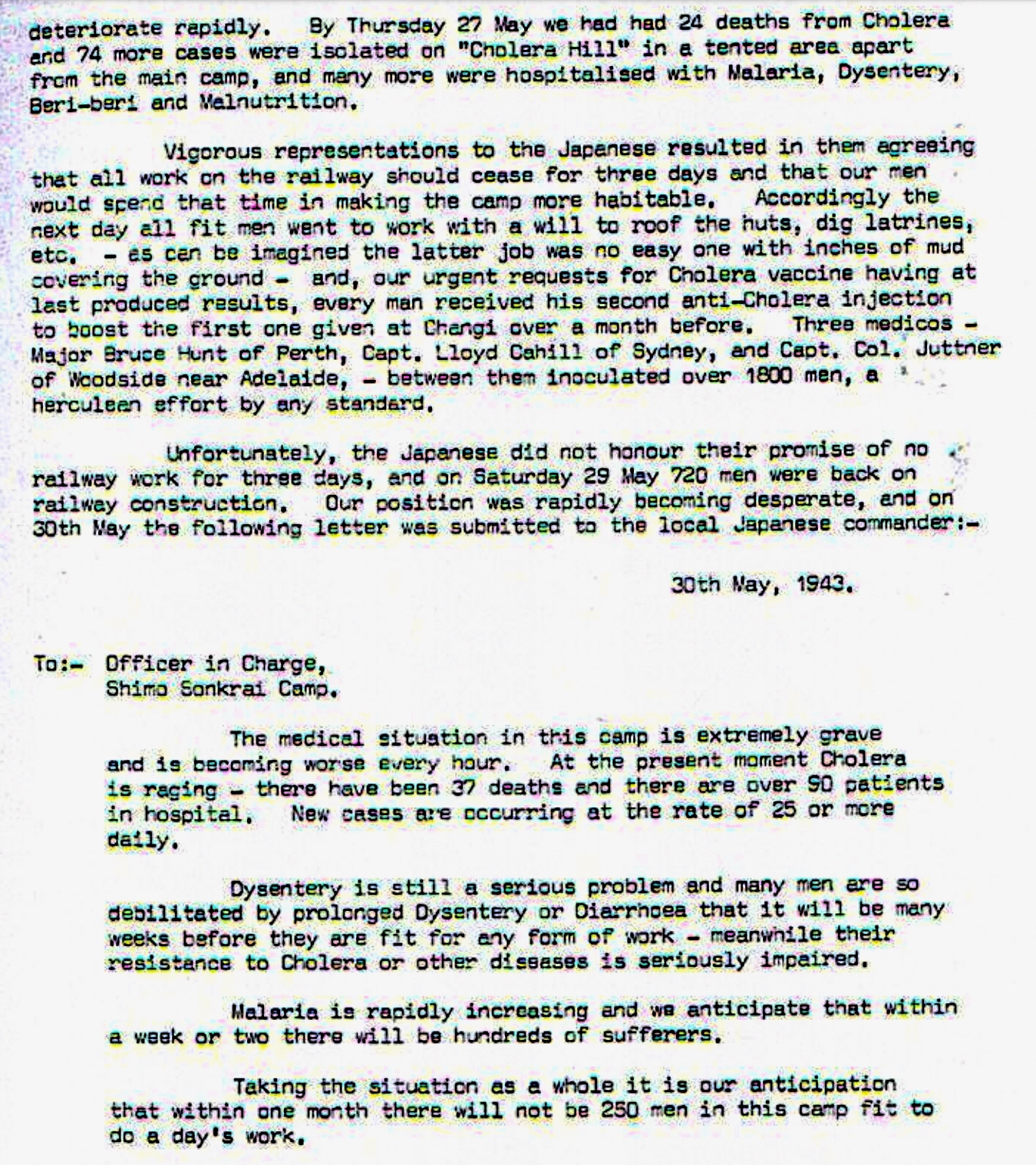




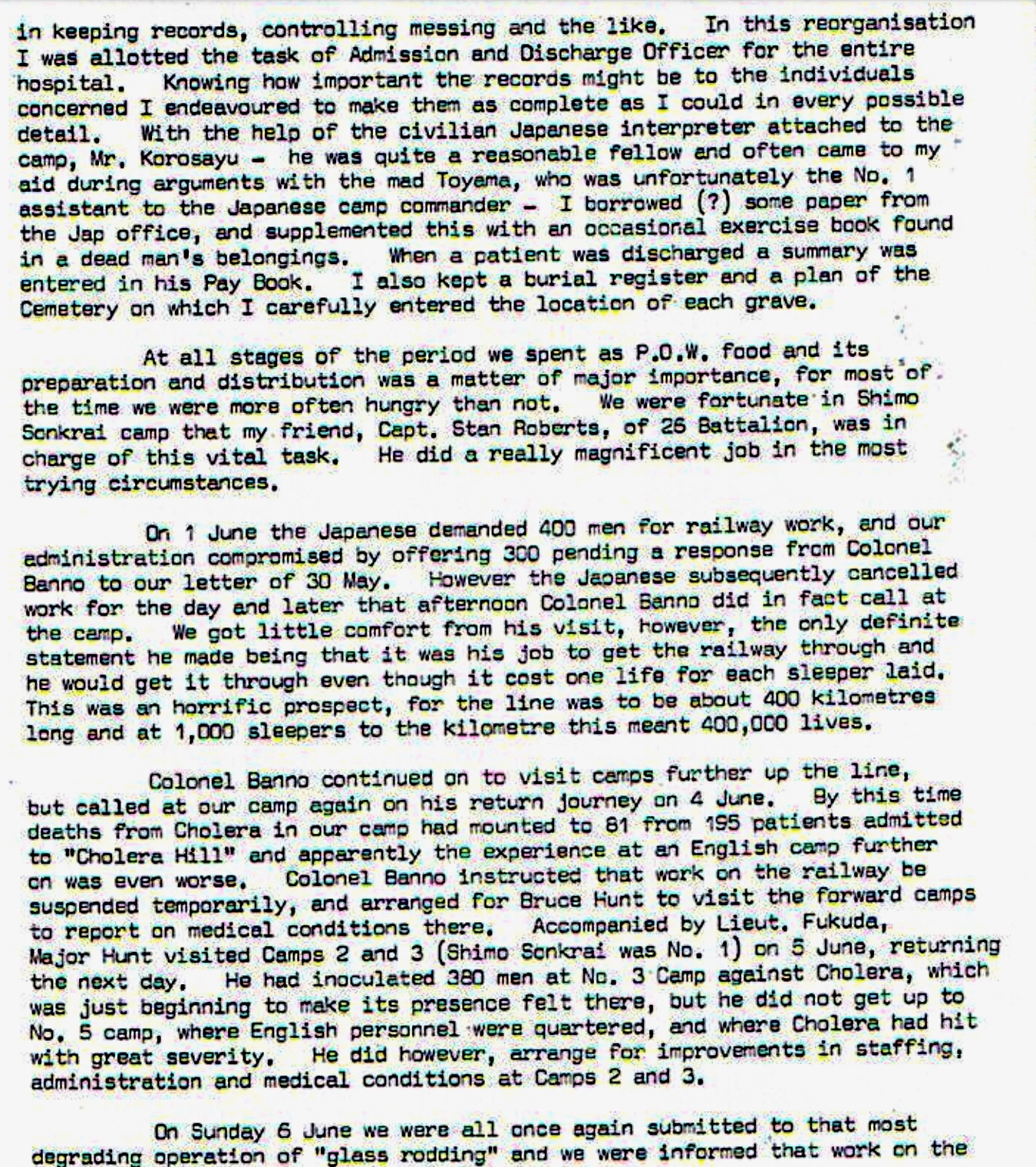





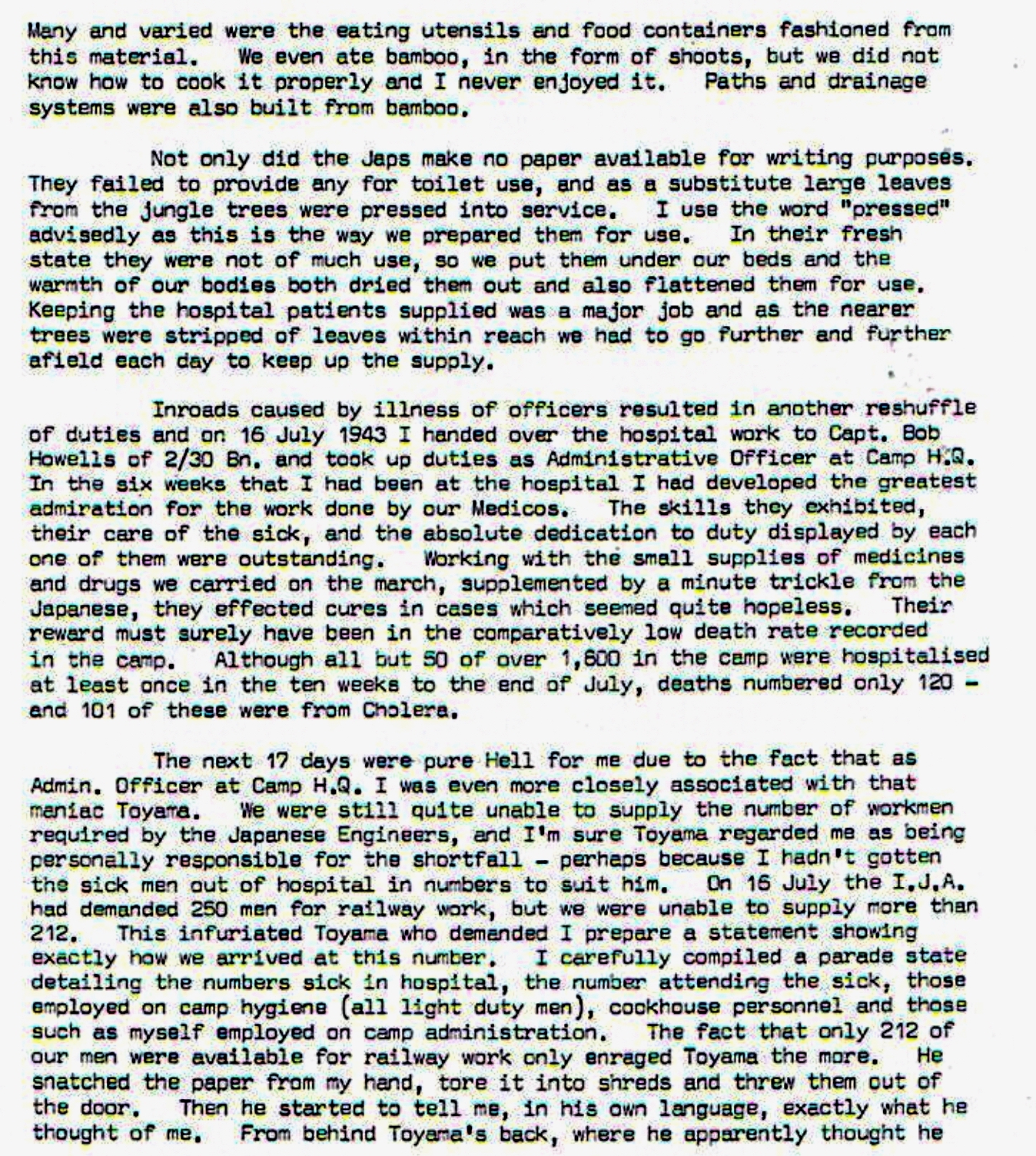

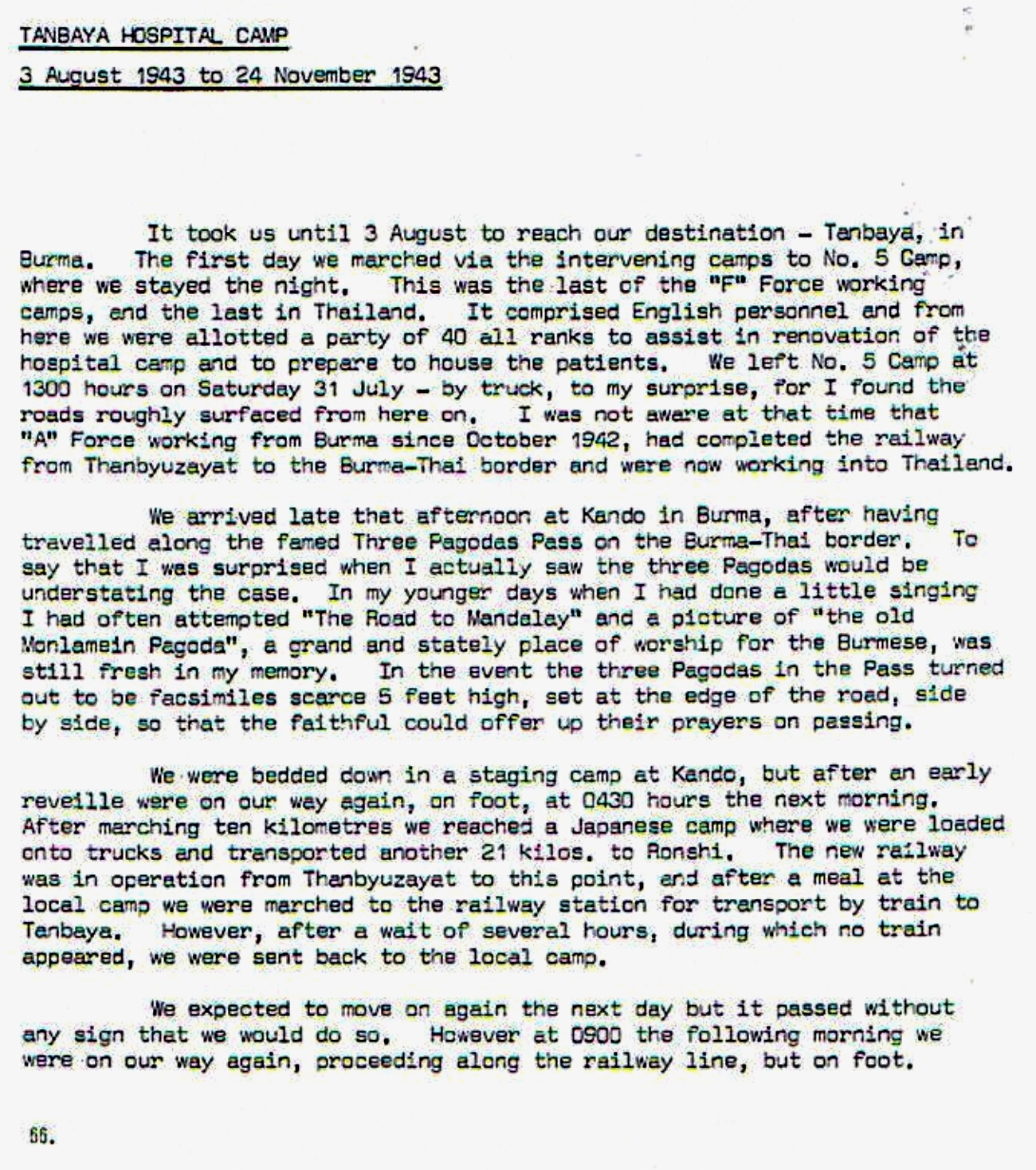
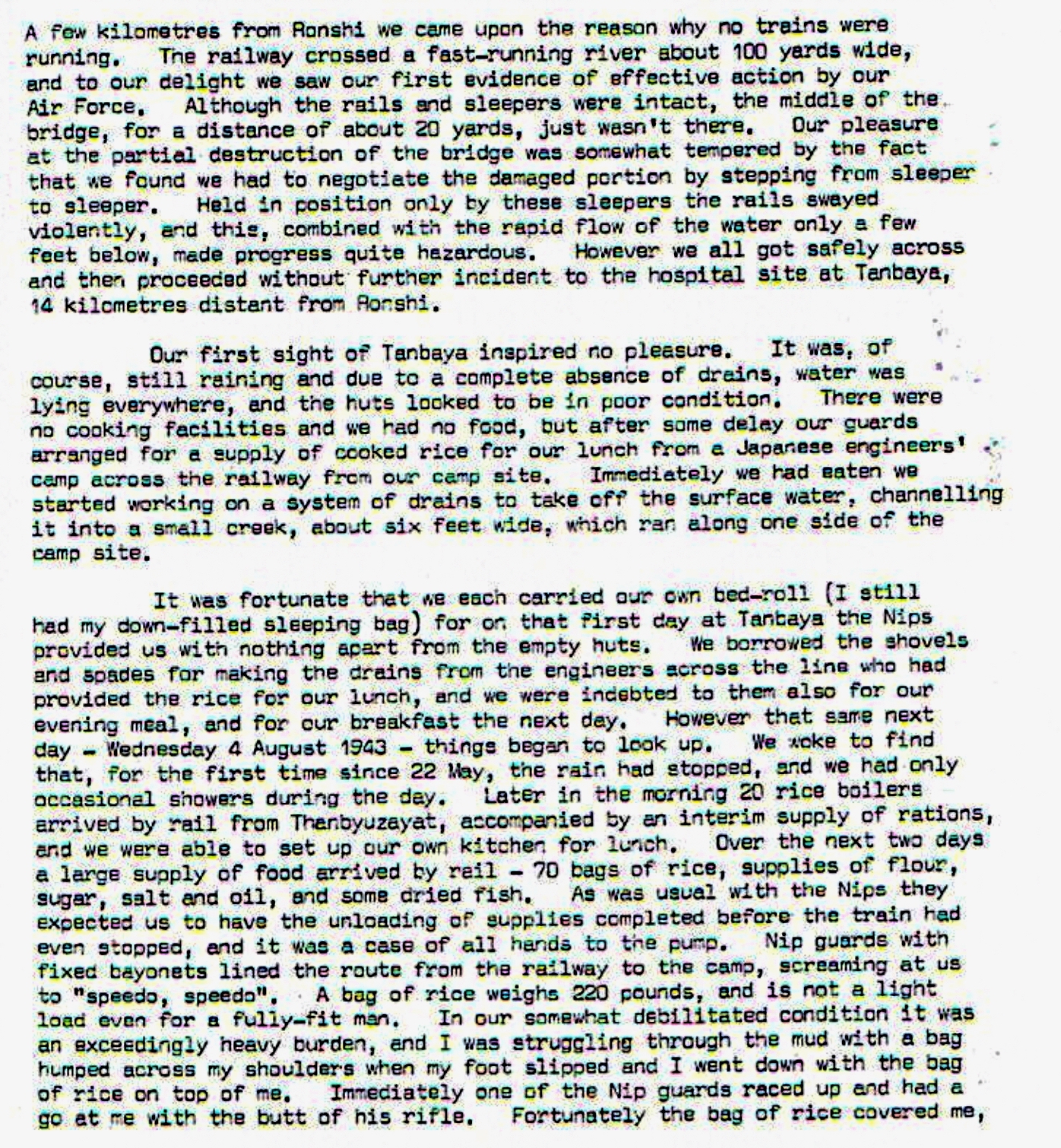
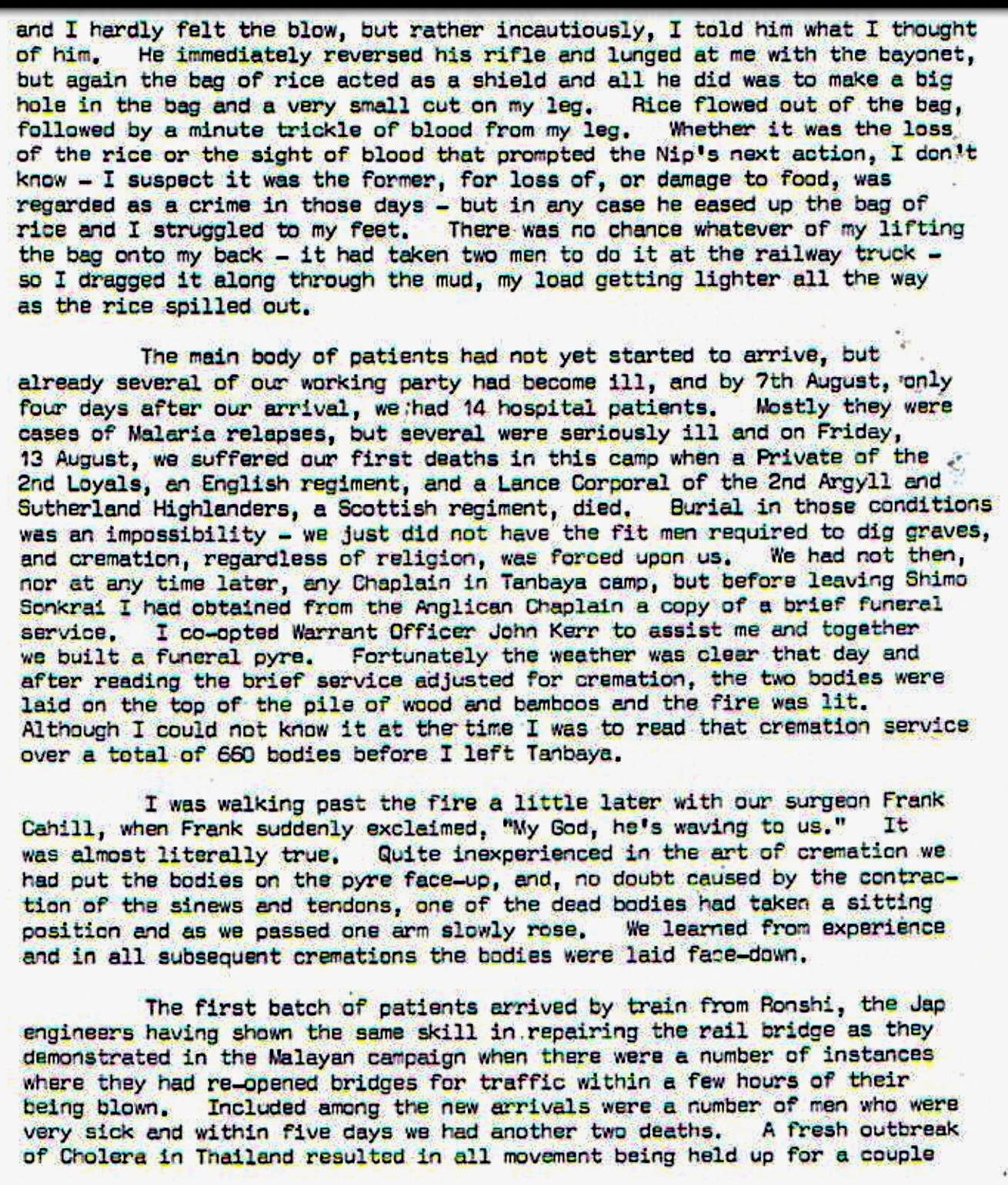

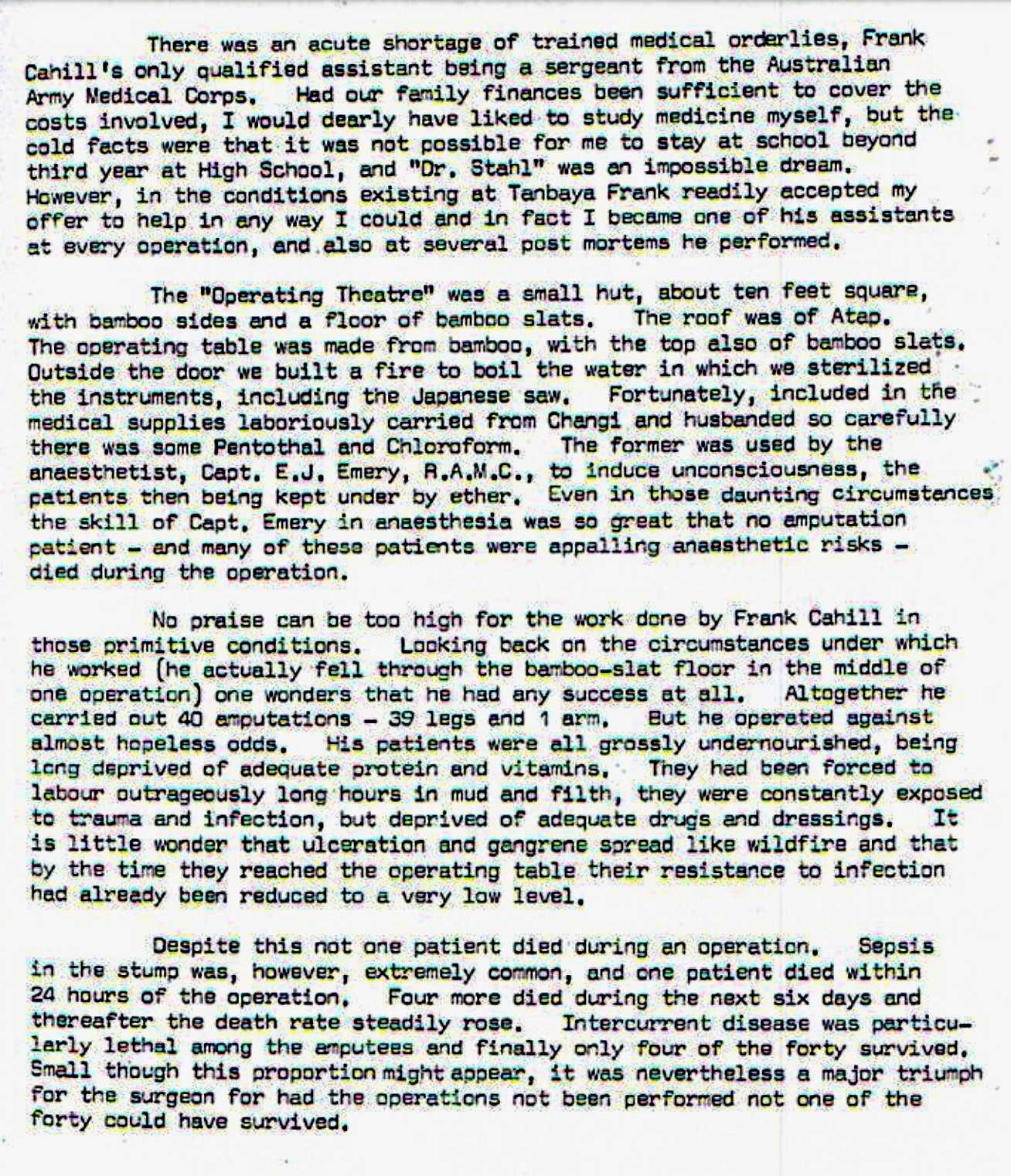



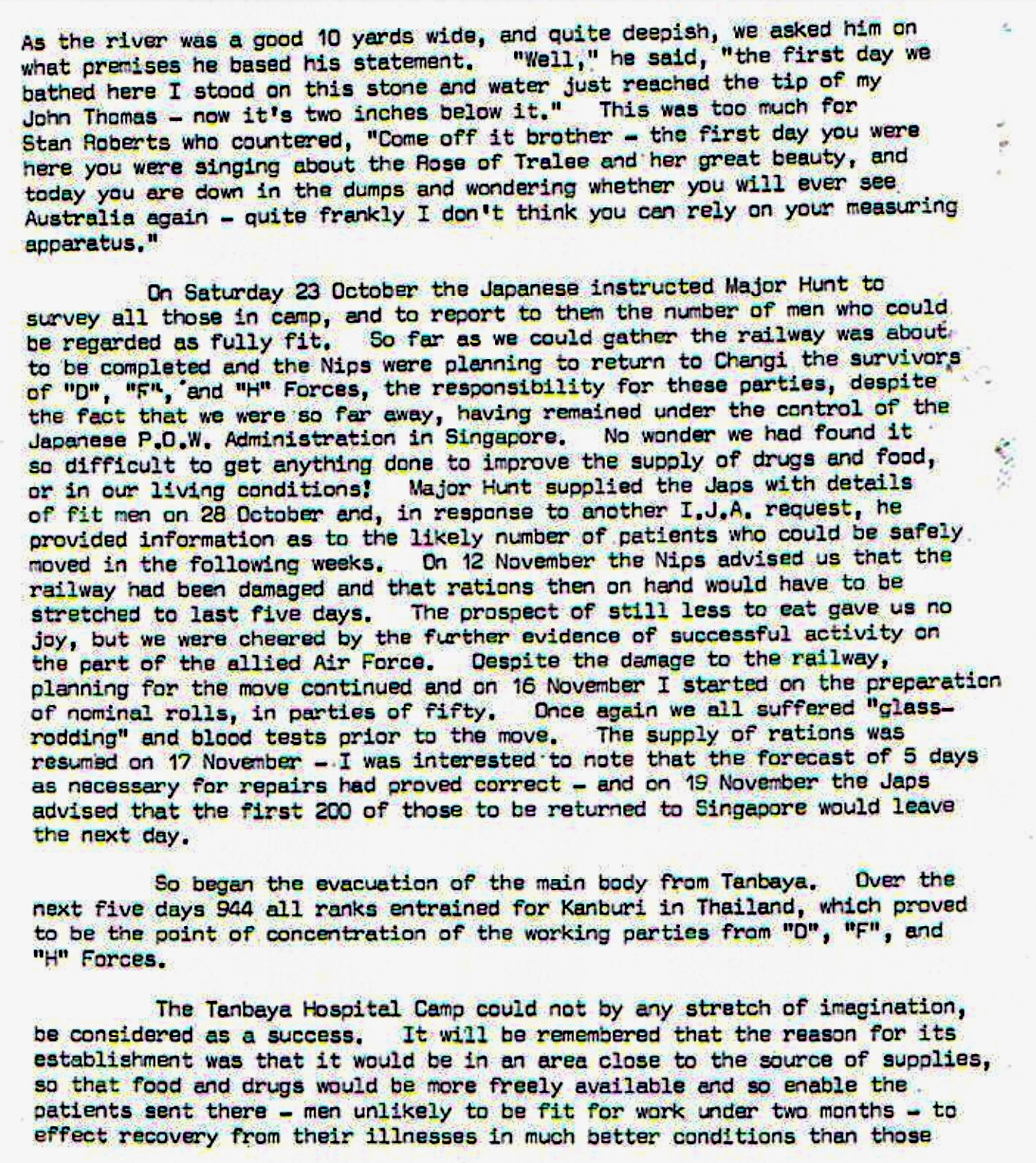

We wish to acknowledge Peter Winstanley who kindly allowed us to use this document from his website. https://www.pows-of-japan.net/articles/31.htm
Please read history of ‘F’ Force Thailand

QX6306 Captain F E Stahl MBE MID, with the Commonwealth flag made by members of “X3” working party which he commanded, in 1945, near Bukit Panjang. Capt. Stahl was adjutant of the Unit from October 1940 to October 1941. Handmade Australian blue ensign made from a Union Jack flag stitched into the corner of blue fabric. Southern Cross Star and Federation Star have been cut out of blue cloth and pieces of white handkerchief sewn into them. The Union Jack is printed along one arm with ‘MADE IN ENGLAND’. Written in black ink along the white hoist of the flag is ‘Made By QX.19748 SGT. Smith D R H 17 AUG 1945’. Written in faded ink on the Federation Star is
‘Dear Stahl Good Luck. A very game action to fly this flag. F.G. Galleghan LT Col Comd A.I.F (P.W) Malaya 20 Aug 1945’.
A white cotton rope with carved wooden toggles at either end is threaded through the hoist. Was first Australian flag flown in Singapore after Japanese Surrender in 1945.
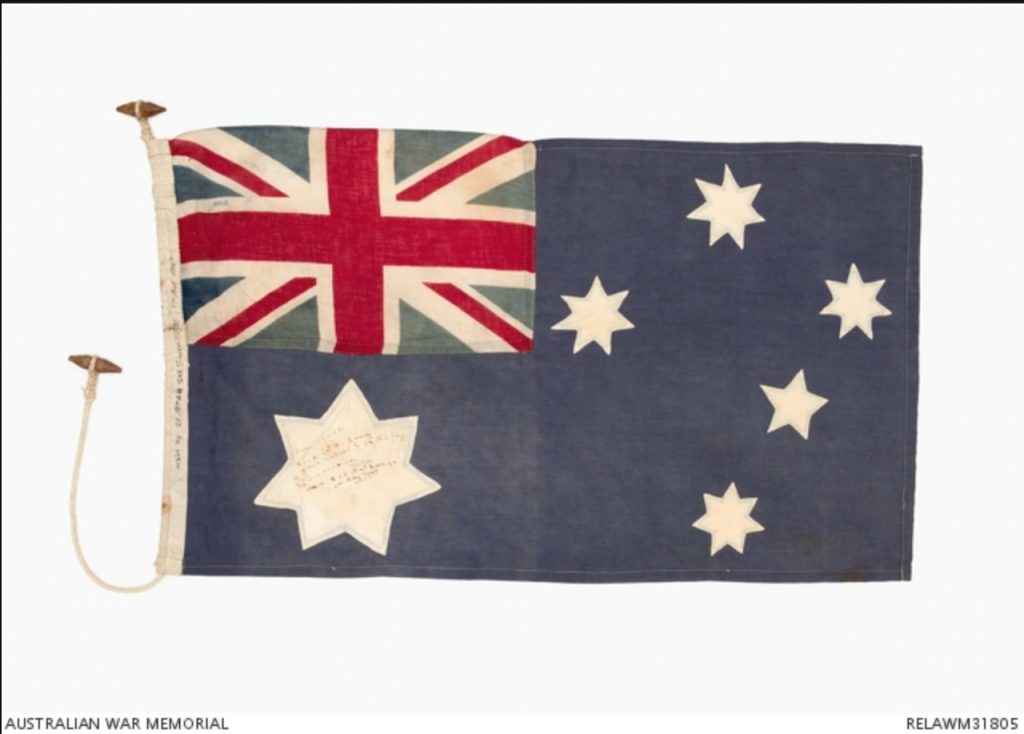
Description
History / Summary
This flag was the first Australian flag flown in Singapore after the surrender of the Japanese in 1945. When news of the imminent surrender for the Japanese filtered through to the Allied prisoners, QX6306 Captain Frederick Stahl had this flag made to be flown once peace was announced. Stahl was born in Victoria in 1909 and enlisted in the Army in Queensland in July 1940. He served with 8 Divisional Signals and was captured by the Japanese in February 1942. He was imprisoned at camp X3 at Bukit Panjang on Singapore Island along with QX19748 Sergeant Darcy Robert Henry Smith, a tailor from East Gympie who enlisted with 2/1 Heavy Battery of the Royal Australian Artillery in March 1941. Stahl asked Smith to make the flag which was made from a Union Jack owned by TX3788 Private Frederick Pegg, 2/40 Battalion, who used it for burials and blue Japanese sheet material stolen from the stores. The stars were made by QX19566 James French, 2/10 Field Regiment, from Red Cross handkerchiefs and the sewing thread was unraveled from Japanese socks. While the material was being gathered it was kept hidden under the prisoners’ sleeping platforms and when Smith began sewing QX23706 Private Vivian Gambling, 2/3 Ordinance Stores Company, kept watch.
On 20 August the Japanese surrender was announced in the camp by the arrival of British parachutists. The flag flew above the camp for some days until the men marched out to join other prisoners at Changi. Stahl was then summoned by the AIF Commander at the camp, Lieutenant Colonel ‘Black Jack’ Galleghan who asked him to fly his flag above the gaol alongside the British flag until a larger, more official flag could be obtained. Stahl agreed and on its return to him Galleghan wrote the inscription which appears on the Federation star. After their return to Australia, Stahl was discharged in December 1945, Mentioned in Despatches and was made a member of the Order of the British Empire. Smith was discharged in January 1947.

Formal group portrait of members of the Northern Command Signals Officers’ Mess. Back row, left to right: QX6138 Lieutenant (Lt) Phillip Bryan Robin; QX6297 Lt James Edward McConnell; QX45089 Lt Roydon Byth Robinson; QX42652 Lt Leo Claude Clifford. Second Row: QX40786 Lt John Stanton Davis Mellick; QX6483 Lt Edwin John Esler; QX36573 Lt Michael Ratcliffe Bates; QX40785 Lt Jack Raymond Stephensen; QX6165 Lt Bertram John Wilson. Third row: QX6163 Lt Alan John Crozier; QX40782 Lt Eric Alfred Parker; QX6166 Lt Arthur Edward Muirhead; Lt H J Dunlop; QX6306 Lt Frederick Edwin Stahl (later awarded the MBE for “meritorious service as a prisoner of war [of the Japanese] in Thailand”; QX36555 Lt John Francis McConachie [later awarded the OBE “for superb organization at Lae and Samar].Front Row: QX42651Captain (Capt) Gordon John Cooper Hargreaves; Q424 Capt Roger Fitzgerald Hartigan; QX35735 Major (Maj) Lionel Victor Mervyn Jensen; QX36205 Lieutenant Colone (Lt Col) Rupert Henry Sainsbury, Commanding Officer; QX6168 Lt Douglas Vincent (Staff Corps) Adjutant; Capt F Scott and QX6333 Capt Albert Patrick Garde. Inset at top right is QX6167 Lieutenant William Spencer Beaney.
This is a transcript of an AWM interview with Fred Stahl
https://www.awm.gov.au/collection/C298596
Below: 1950 Fred Stahl guest speaker to Legacy, Adelaide – his view of Japan and her people. Stahl’s descriptions of Tanbaya Hospital wards could have only been described by somebody who had been present.


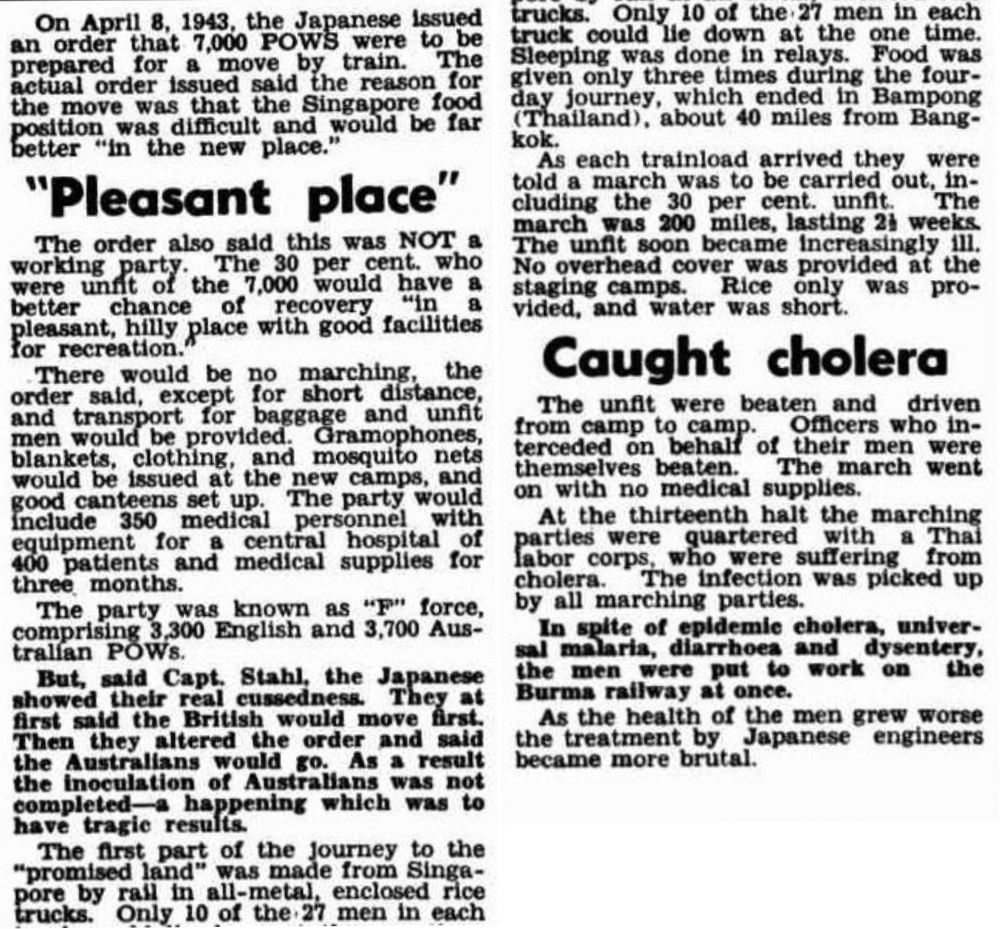
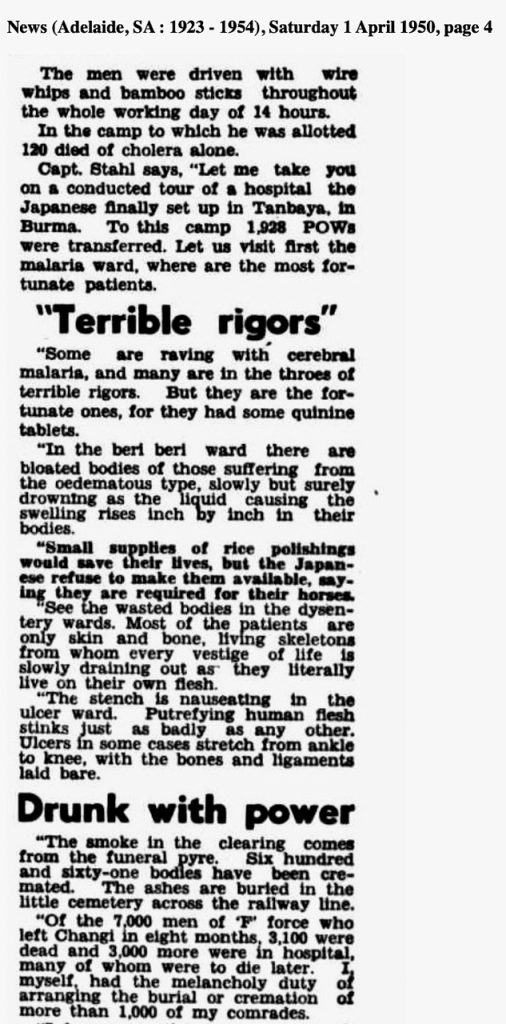


A translation of above which was printed 3 Sept 1945 in a South Australian newspaper, with the headline reading
A Quiet Moment:
POW
The darkest night has ended
And far across the sea, the
Captive looks again to’ards
Home – the prisoners are free.
Soon they’ll be reunited with
dear ones who’ve stood fast-
and hoped and prayed and
waited. Believing to the last.
The dark clouds have been
lifted and the smiles come
shining through; your faith has
been rewarded – and he’s coming
back to you.
Southern Cross
Please read Fred Stahl’s words about Australian Nurse Capt Hannah who survived sinking of ‘Vyner Brooke’ became POW of Japanese
